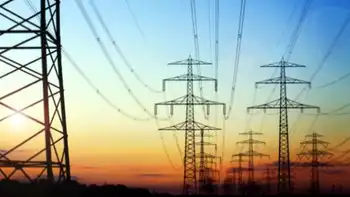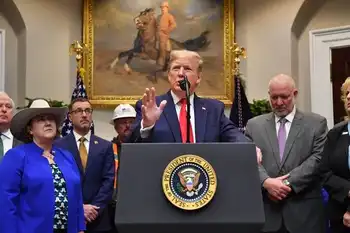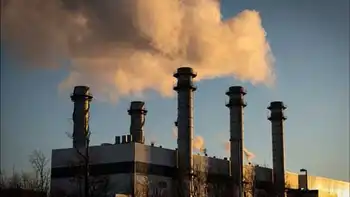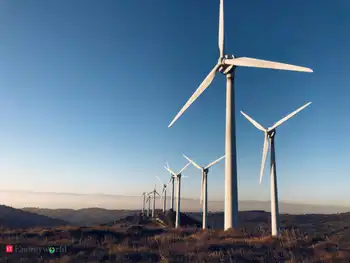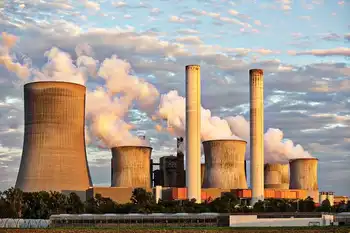Ford, Nissan, Tesla's electric plans get $8B jolt
By Associated Press
High Voltage Maintenance Training Online
Our customized live online or in‑person group training can be delivered to your staff at your location.

- Live Online
- 12 hours Instructor-led
- Group Training Available
Energy Secretary Steven Chu said the three automakers would be the first beneficiaries of a $25 billion fund to develop fuel-efficient vehicles. The loans to Ford will help the company upgrade factories in Illinois, Kentucky, Michigan, Missouri and Ohio to produce 13 fuel-efficient vehicles.
Nissan will receive loans of $1.6 billion to retool its plant in Smyrna, Tenn., to build electric vehicles and construct a battery manufacturing plant. Tesla will get $465 million in loans to build electric vehicles and electric-drive powertrains in California.
The loans were designed to help auto manufacturers meet new fuel-efficiency standards of at least 35 mpg by 2020, a 40 percent increase over current standards.
"These loans will help the auto industry meet and even exceed the president's tough fuel standards," Chu said at Ford's Research and Innovation Center. "This means the most fuel-efficient cars in the world must be made right here in America."
Dozens of auto companies, suppliers and battery makers have requested $38 billion from the loan program, which was created last year to give car companies and suppliers low-interest loans to retool their facilities for green vehicles and components such as advanced batteries.
Ford had been seeking about $5 billion in loans by 2011 and a total of $11 billion from the program to invest $14 billion in advanced technologies over the next seven years.
The loans will help Ford convert two truck plants to produce cars and help the company raise the fuel efficiency of nearly 2 million new vehicles a year. The government said it will help Ford transform nearly 35,000 jobs into "green" engineering and manufacturing jobs.
Ford has said it intends to bring several battery-electric vehicles to market starting next year, with a plug-in hybrid vehicle coming by 2012.
"We want to be in every market segment in the U.S.," said Ford CEO Alan Mulally. "Every year forever we want to continue to improve fuel efficiency."
Ford expects to begin repaying the loans in 2012, with an interest rate based on the current U.S. Treasury rate hovering between 3 and 4 percent, said Ford spokesman Mike Moran. The company would have faced much higher interest rates from private lenders.
Ford can draw from the loan for work done to retool its plants going back to late last year, Moran said. Priority was given to plants at least 20 years old and the facilities must build cars that improve fuel efficiency by 25 percent.
Nissan said it would use its $1.6 billion loan to modify its Smyrna, Tenn., plant to produce zero-emissions vehicles and build a new facility to produce lithium-ion battery packs. The Japanese company has previously outlined plans to develop an all-electric car with 100 miles of pure battery range for release in late 2010.
The electric car will initially be built in Japan. Dominique Thormann, Nissan North America's senior vice president for administration and finance, said the loans could create up to 1,300 jobs at the two facilities and lead to U.S. production of the electric car beginning in 2012.
Nissan Chief Executive Carlos Ghosn said in Japan that the U.S. would be "a very important market" for the company's electric strategy. "I can tell you I'm not at all worried about how to sell these cars because there is an appetite for zero-emission cars."
Tesla, based in San Carlos, Calif., will use $365 million for production engineering and the assembly of the Model S sedan, an all-electric vehicle that is expected to travel up to 300 miles per charge and go on sale in 2011. It will use $100 million for a powertrain manufacturing plant expected to employ 650 workers.
Tesla CEO Elon Musk said the automaker would use the loan "precisely the way that Congress intended — as the capital needed to build sustainable transport."
General Motors Corp. has requested $10.3 billion in loans from the energy program, while Chrysler Group LLC has asked for $6 billion. Energy officials have said the loans could only go to "financially viable" companies, preventing GM and Chrysler from qualifying for the first round of loans.
Chu said the Energy Department has started discussing details of the loans with Chrysler and has begun reviewing the "technical side" of the loan requirements with GM. GM officials said they hoped to get the money shortly after emerging from bankruptcy protection.





